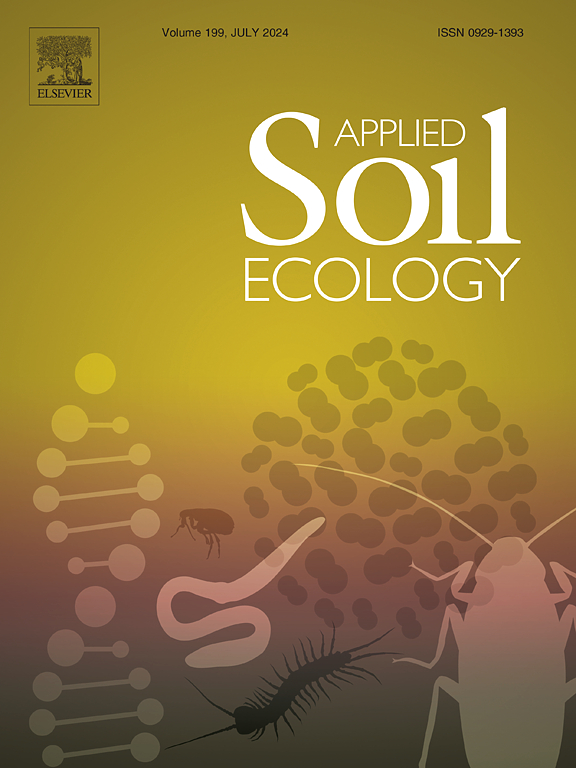The impacts of shrub branch shelter and nitrogen addition on soil microbial activity and plant litter decomposition in a desert steppe
IF 4.8
2区 农林科学
Q1 SOIL SCIENCE
引用次数: 0
Abstract
Shrub encroachment and nitrogen (N) deposition have become two critical factors that cause global grassland ecosystems degradation. However, the combined effects of shrub branch shelter and N deposition on soil microbial activity and litter decomposition in grasslands remain obscure. This study adopted four branch shelter levels of 0 % (no shelter), 30 %, 50 % and 70 % as the main plots, and four N additions including 0 g m−2 a−1, 10 g m−2 a−1, 20 g m−2 a−1 and 40 g m−2 a−1 as subplots in a Northwest China desert steppe. Subsequently, soil temperature, soil moisture, pH, N content, activities of C and N cycling-related enzymes, and microbial community structure between 0 and 5 cm were determined post 2 years, and litter decomposition from dominant plants was also determined. The results demonstrated that N additions increased the soil inorganic N content, but decreased soil pH value. However, branch shelters enhanced soil moisture, yet had no effect on soil pH value and N content. As results, N additions inhibited soil N cycling-related enzyme activities, but branch shelters accelerated the activities of the most tested extracellular enzymes. Branch shelters also presented opposite potentials to N additions in affecting soil microbial community structure. Overall, shrub shelters counteracted the negative effects of nitrogen deposition on soil enzyme activity and microbial community structure. Consequently, both branch shelter and N addition promoted litter decomposition. Therefore, branch shelter could be used as feasible measures to restore degraded grasslands caused by shrub encroachment and N deposition in arid and semiarid areas.
求助全文
约1分钟内获得全文
求助全文
来源期刊

Applied Soil Ecology
农林科学-土壤科学
CiteScore
9.70
自引率
4.20%
发文量
363
审稿时长
5.3 months
期刊介绍:
Applied Soil Ecology addresses the role of soil organisms and their interactions in relation to: sustainability and productivity, nutrient cycling and other soil processes, the maintenance of soil functions, the impact of human activities on soil ecosystems and bio(techno)logical control of soil-inhabiting pests, diseases and weeds.
 求助内容:
求助内容: 应助结果提醒方式:
应助结果提醒方式:


